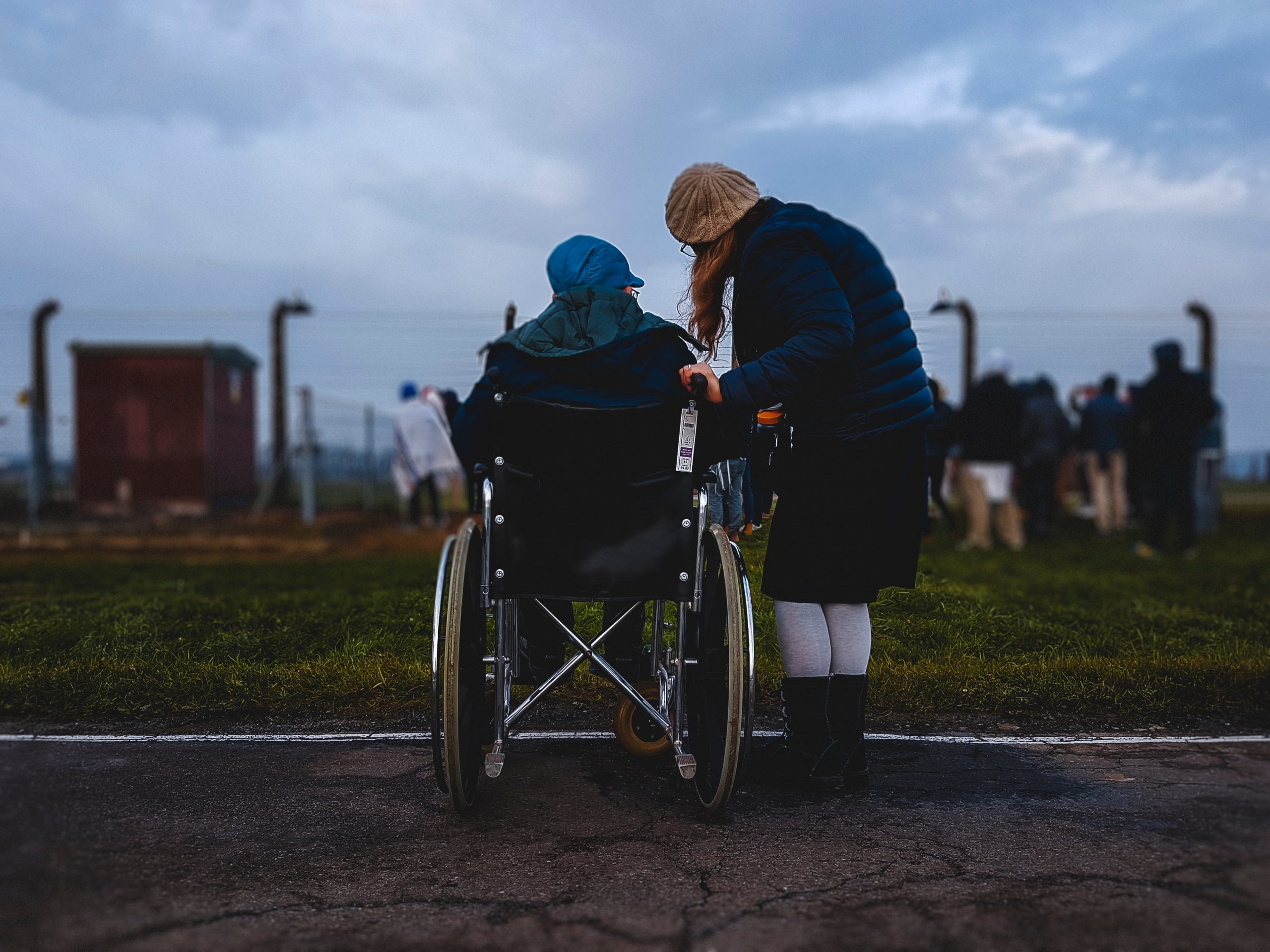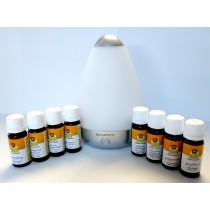What is Sensory Stimulation?
In simple terms, multisensory stimulation provides a way to awaken senses through a variety of activities and materials. Sensory stimulation typically applies to the sensory systems which we’ll briefly pinpoint here before we explore the benefits of sensory stimulation in further detail:
Sensory stimulation is known as a form of therapy for groups of people with sensory processing difficulties. However, it is also hugely beneficial for other individuals, including those with autism or dementia. Let’s explore those benefits in more detail.
Whether the individual with autism experiences hypersensitivity or hyposensitivity, sensory stimulation can be used to help individuals with autism or a sensory processing disorder to feel calm and relaxed as well as assisting them in developing sensory processing skills. Sensory stimulation activities for autism also help individuals improve their social skills, coordination, and fine/gross motor skills. So, what are some sensory stimulation activities for individuals with autism? Let’s go through each sensory system.
Children with autism sometimes fidget or ‘stim’ if they struggle with hyposensitivity. This can be distracting for them and others at times where concentration is needed. A vibrating sensory cushion can help by providing the stimulation they usually seek through stimming. Individuals who find balance difficult may benefit from balancing activities, by using the balancing and gross motor bundle. This bundle includes a balance beam with multicolored sections for interactive balancing activities. When stepped on, each colored section acts as a switch that changes the color of the light produced by the IRiS listener (the IRiS Light Spreader in the bundle) to the corresponding color on the balance beam. The IRiS Balance Beam can also be paired to any number of IRiS Listeners for a truly engaging experience!

From strengthening fine motor skills to helping children with autism feel soothed and calm, the benefits of touch and texture can be really powerful! Tactile sensory stimulation therapy activities may include presenting a variety of objects with different textures to individuals for them to explore and touch. These objects may also aid dexterity. A popular tactile tool is the soft Fiber Optic Carpet that also appeals to visual senses. And, the Interactive Ball Pool is a great way for individuals to feel safe and sheltered when they’re overwhelmed. It’s important to remember that some children with sensory processing difficulties may struggle with tolerating the sensation of touch. For these individuals, sensory stimulation therapy may include teaching them to tolerate touch by gradually desensitizing them to these textures over time.

Visual sensory stimulation is beneficial for helping develop social skills and hand-eye coordination, as well as being a soothing and calming experience for frustrated or agitated individuals. Bubble tubes and bubble walls are a firm favorite with their relaxing bubble streams, lit up by the gently evolving color spectrum.
Musical instruments are a great way to help build hand-eye coordination and an understanding of cause and effect. Why not try using a sound wall, sound board or musical touch wall to explore the sensory benefits of sound? These tools help individuals with autism to match sight and sound in an engaging activity.
Some individuals may respond well to gustatory activities while others may not enjoy them, so it’s important to approach these gently. Gustatory activities can incorporate sucking and blowing activities to help with fine motor skills and speech skills - such as blowing bubbles with a drinking straw or using musical instruments like a recorder. A fun game for individuals who enjoy different textures includes comparing food textures, like crunchy, soft, and chewy. This helps individuals expand their descriptor vocabulary and is a fun way to try new things. Smells can have a huge effect on individuals with sensory processing difficulties. Using an aromatherapy kit can help energize and relax through a range of essential oils such as lavender, sweet orange, eucalyptus, peppermint and others. Sensory rooms are a fantastic way to incorporate a variety of sensory experiences for individuals with autism. Explore our multisensory room offerings and for more information on autism, please read our blog post on understanding autism.
Individuals with advanced dementia can experience a decrease in the ability to engage in sensory activities due to their lack of ability to participate in the same routines they once did. Creating opportunities to engage in sensory stimulation activities for elderly people is particularly helpful when it comes to alleviating frustration and distress as well as helping evoke memories. Additionally, sensory therapy can help improve cognition and daily function, confidence to participate socially, increase concentration, and aid communication skills. These are all areas of life that can be negatively impacted by the challenges of dementia, so sensory stimulation can be a great way to help people with dementia regain some independence and control. So, which activities and equipment are best for each sensory system? Let’s go through the senses and explore some examples of activities for each. You can also read our blog post on indoor activities to do with dementia patients. It’s important to remember that everybody is different and what works for one person may not work for another, so patience and trial and error are your friends.

While not all elderly individuals are up to strenuous movement, vestibular stimulation can be beneficial for those who are more agile. A gentle stroll is beneficial in itself to provide exercise and increase blood flow, and even just as a change of routine. It can also expose individuals with dementia to a variety of other sensory stimuli to promote calmness and even trigger forgotten memories. Less active individuals can experience a different form of movement through the Vibro-Acoustic Platform that transmits vibrations through muscles and joints for a soothing experience.
The power of touch is not to be underestimated when it comes to sensory stimulation. The best tactile activities are those that help the individual remember activities they once enjoyed. For example, people who were once avid gardeners might enjoy handling and experiencing the texture of soil, or those who enjoyed baking might like kneading dough. Animal lovers might find a lifelike pet to be a tactile comfort. The Perfect Petzzz range includes lifelike cats and dogs with synthetic fur and a realistic breathing mechanism. Additionally, hand and shoulder massages can help individuals feel relaxed and reassured.
Visual stimuli can be a brilliant reminder of many types of memories. One visual sensory activity for elderly individuals with dementia is watching a projector. The Aurora LED Projector Bundle includes an LED projector that can cast images onto walls, ceilings or the floor! The five effects wheels in the bundle are a series of nature-related images, including Dawn til Dusk, Walk in the Woods, Flower Power, Tropical Reef and a Blank Wheel for you to make your own. You could get creative with the blank wheel and show images from a time and place that the individual could reminisce over.
Music is a very effective way to soothe and bring back memories. If an individual with dementia was formerly musically gifted, they might come alive at the opportunity to tinker on the piano or another instrument. The skill might even come back to them. Alternatively, something as simple as playing their favorite music can help access the benefits of auditory sensory stimulation.
The senses of smell and taste are a wonderful path to connect us to the past. From perfumes to baked goods, a particular aroma or flavor can trigger nostalgia very quickly. This sensory stimulation can range from smells of certain foods to aromatherapy. Try baking or cooking something for the individual with dementia and seeing what memories it brings up. Or, try a hand massage, and combine this with essential oil aromatherapy such as lavender to help with sleep and relaxation. Check out our sensory room aromatherapy bundle for inspiration!

Many individuals with dementia or autism respond well to a multisensory room or sensory cocoon. A multisensory room provides a safe space that combines stimulating activities and equipment for each sense so that the individual can choose or be guided to the right sensory stimulation for their needs. If you aren’t quite sure where to begin, please read our blog post on how to choose the right sensory package or contact our team for help accessing the benefits of sensory stimulation.